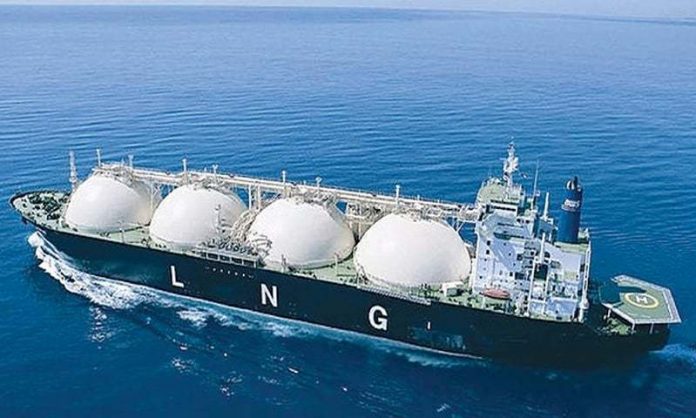LAHORE: S&P Global Platts survey of several companies has revealed Pakistan’s rising LNG imports will contribute to fuel demand halving by 2020, the study predicted.
Four brokerage houses, Topline Securities, Optimus Capital Management, Intermarket Securities in conjunction with S&P Global Platts shared their forecasts for Pakistan’s fuel consumption and demand.
State-owned oil marketing giant and nations largest fuel oil importer, Pakistan State Oil (PSO) was also surveyed for this study.
As per the report, fuel oil demand is expected to fall from 9.6 million mt in financial year 2016-17 to roughly 4.5 million or less by FY 2019-20.
Fuel imports are likely to tumble as Pakistan switches to coal for power generation purposes. Projects under China-Pakistan Economic Corridor are coming online, like Sahiwal coal-fired power plant and the one recently inaugurated at Port Qasim, Karachi.
Although, the country’s fuel mix for power generation is still dominated by furnace oil, but that will be change as several LNG-fired power projects in Punjab like Havelian, Balloki etc. come online.
Also, thirst for rising LNG imports can be assessed from the opening of PGPL’s second LNG terminal at Port Qasim, Karachi which was inaugurated to much fanfare in November by Prime Minister Shahid Khaqan Abbasi.
In October, PM Abbasi ordered phasing out of power plants dependent on expensive furnace oil for generation and be converted to gas as soon as possible in view of the availability of ample gas for the power sector.
This stirred the hornets’ nest as pandemonium hit the oil and gas sector, and created a power crisis as plants suddenly went offline at start of November. Not only did it cause major impediments for oil refineries across the country, but created headaches for PSO which had ordered several shipments of the commodity for power-generation purposes.
Then in third week of November it was reported that a ban on imported furnace oil was under consideration by the government due to topped up storages and supply challenges. The miseries compounded further as Byco was forced to shut down its refinery capable of producing 120,000 tons of oil due to low lifting of high sulphur furnace oil (HSFO).
In an ironic twist, the newly inaugurated 2nd LNG terminal developed technical faults in early-December, crippling the energy supply chain and exposing the inadequate planning on part of the government’s energy managers.
The pot kept boiling as overstocking of furnace oil created shortage of jet fuel used by aviation aircrafts and the Pakistan Airforce. PSO said it had forwarded more than five warnings to petroleum ministry regarding forthcoming dry-outs at airports which could force Civil Aviation Authority to declare NOTAM.
And governments expected you-turn didn’t take long to materialize, as earlier this week it was reported they had agreed to lift imported and domestic furnace oil for power plants to ease jet fuel crisis considering problems at 2nd LNG terminal.
This decision would allow easing of pressure on refineries which have been on verge of shutdown due to non-lifting of furnace oil and crippled production of JP1 and JP8 fuel for aviation industry and the airforce.
S&P Global Platts survey said “”We were forecasting overall fuel oil demand to witness flat growth from fiscal year 2018 to fiscal year 2020,” said Umair Naseer, head of research at Topline Securities.
“But given the government’s resolve to utilize LNG for upcoming power plants, we now forecast fuel oil sales to decline from around 8 million mt in FY2018 to 4 million mt in 2020,” he added.
Furthermore, “We were forecasting overall fuel oil demand to witness flat growth from fiscal year 2018 to fiscal year 2020,” said Umair Naseer, head of research at Topline Securities.
“But given the government’s resolve to utilize LNG for upcoming power plants, we now forecast fuel oil sales to decline from around 8 million mt in FY2018 to 4 million mt in 2020,” he added.
Pakistan’s LNG demand is estimated to increase over next five years, with “Pakistan LNG estimating unconstrained demand at 30 million mt/year, or 4 Bcf/day of gas equivalent, by 2022, which is half of the country’s total gas demand projection of 8 Bcf/d for that year, according to government estimates,” read the S&P Global Platts report.



































